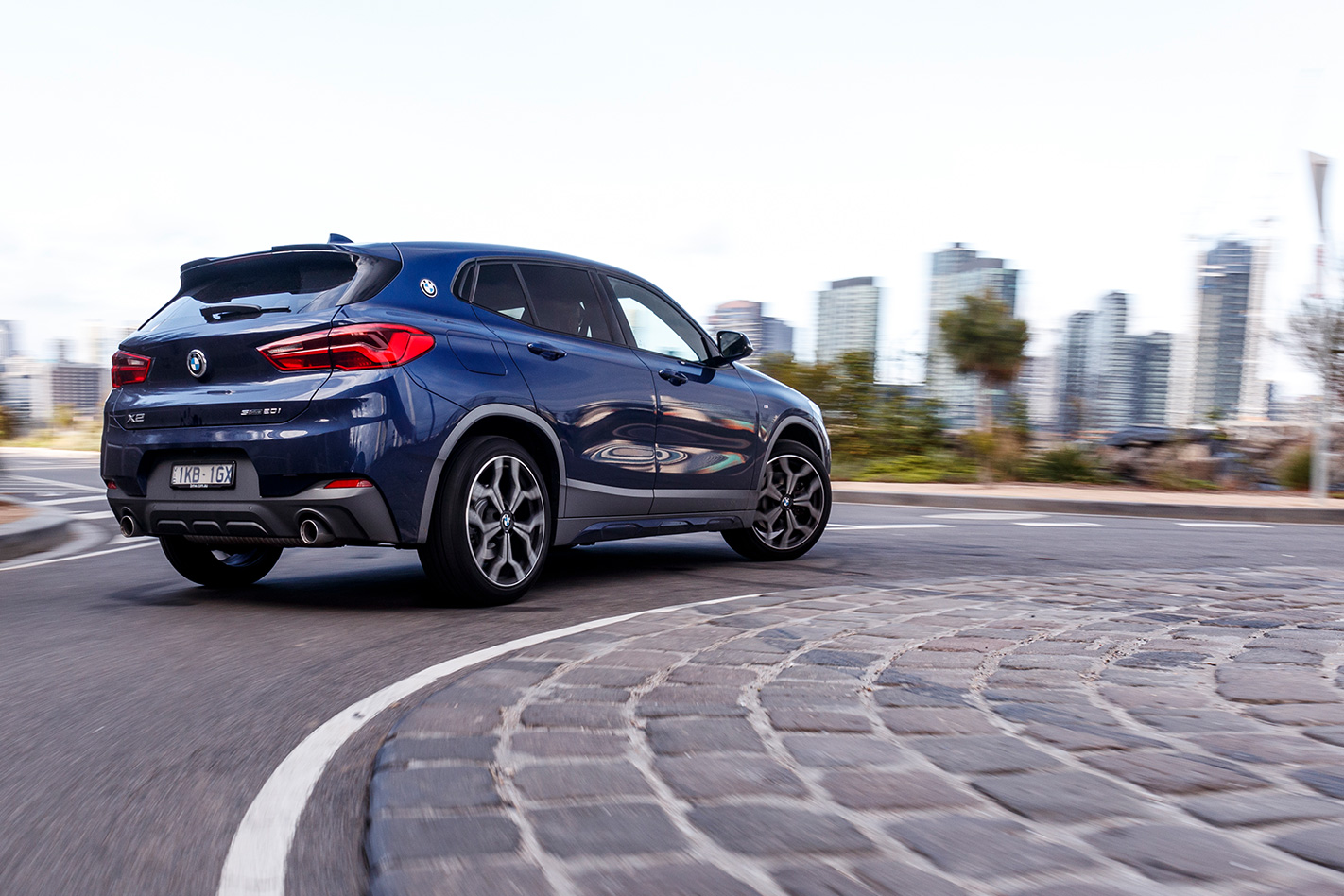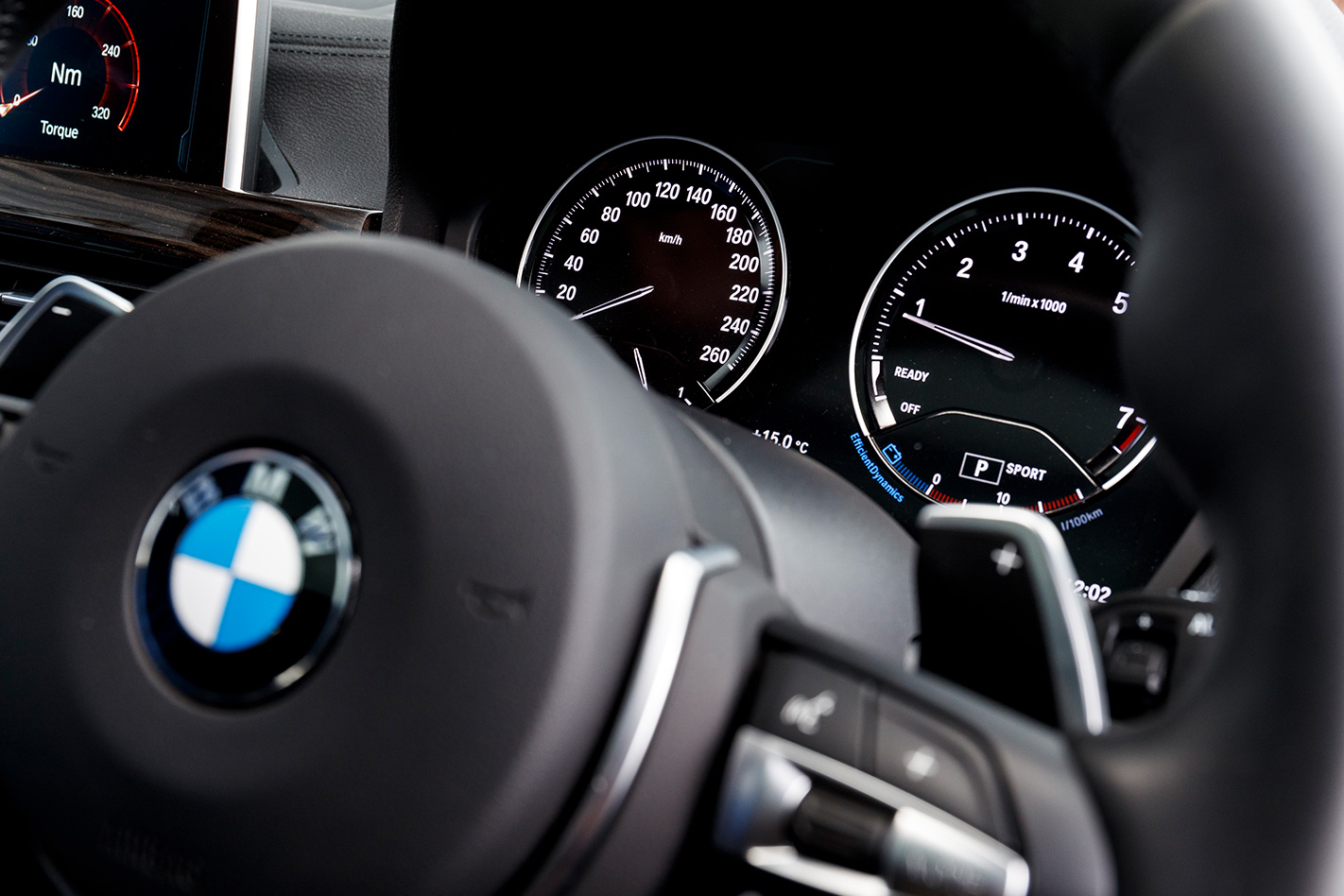
TELL ME ABOUT THIS CAR
Okay, so you’re keen on acquiring new small luxury SUV, particularly one wearing a BMW badge. But before we go anywhere, it pays to know a little bit of history; the German luxury brand has already had a couple of cracks at the idea before – with mixed success.

In 2009, it borrowed the best bits of the BMW 3 Series to create the X1, an awkward, gawky SUV that drove remarkably well, but only because it was a quasi-station wagon wrapped in tall SUV clothing.
Unfortunately, the second generation of the X1, released in 2015, didn’t improve on the breed. Yes, it was wonderfully packaged, but something was lost in translation as somewhere in the leap from rear- to front-wheel drive the new X1 lost much of the dynamic panache of its predecessor.
BMW has now answered that criticism with the first compact SUV to wear an even number in its name, the all-new X2. Straight away, it fixes the one big problem of the X1. But what else does it bring?

STRENGTHS
- The X2 is now a lot more enjoyable to drive compared with the car it replaces. The steering is sharp and direct, and the little BMW is quite fun to tip into a corner, helped by a nicely tuned stability control system that allows you to play on a twisty stretch of road, but is always ready to step in and rein things in when needed.
- It rides well too. Even with firm run-flat tyres, the compliant suspension tune means the low-speed ride, typical of city driving, is much smoother. The same goes for high-speed driving, where the X2 is much better at smoothing out the lumps and bumps.
- The BMW X2 has one of the best driving positions in the game. The flexibility of adjustment in the front seats, the height and position of the steering wheel, the location and visibility of the instrument cluster and even the distance to the windscreen are up there with the best in the business.
- Its 2.0-litre turbocharged engine is a pearler. Strong, and with plenty of muscle across its rev range, it is also quite frugal, even when pushed. Officially it will aim to achieve 6.0L/100km, but real-world driving conditions will add about 20 percent to this number.

- The rear seats are roomier than the X2’s dimensions would suggest. The rear is nicely finished, with more soft-touch surfaces around the doors than hard plastics, and plenty of legroom. Even with a sunroof, there’s still adequate headroom for taller adults. There are three backrest positions available, too, from too stiffly upright to teenage-level relaxed.
- The boot is huge, coming in at 470 litres. Some of that space is taken up by a false floor that lifts up to reveal a big hidden storage space that, not surprisingly given that the X2 uses run-flat tyres that can be driven on even if they get a puncture, is about the same size as a space saver spare wheel.
- BMW’s latest iDrive system has improved even further. The dial-controlled system for infotainment and navigation settings was once derided for its complexity and three-dimensional structure, but in this latest generation feels intuitive and logical. It has taken a while, though.
- The X2’s fresh styling is attractive. Even standing still, the off-kilter wheel arches give a sense that the X2 is a fluid, dynamic vehicle. The coupe-like profile of the rear looks good with the wheel-at-each-corner design.

WEAKNESSES
- It’s expensive. Our test car was priced from $55,900, which is thousands more than some rivals. You won’t have to look very far to see the X2 is at the more premium end of its class, even among the compact luxury SUVs.
- Options are expensive. Unless you’re prepared to suffer the de-spec doldrums, adding a few personal touches isn’t a cheap proposition; Apple CarPlay support is a $478 add-on, an anti-theft alarm is $654, and tinted windows are $500.

- If you’re a keen driver, you’ll need to spend an extra $400 for the X2’s adaptive dampers. They transform a school run special into a weekend dynamo at the push of a button, not to mention offering a new level of ride comfort compared with the default set-up.
- The BMW X2’s dual-clutch gearbox can be a bit grumbly. You’ll notice this at low speeds, particularly when you’re shuffling into a tight car park. In this type of driving, you’ll notice the gearbox tends to hesitate slightly and then grab in response to throttle inputs. Once you’re moving, though, the sporty gearbox will fire through its gear changes so quickly as you build speed that you’ll hardly notice it has happened.

- The rear seats may be comfortable and supportive, but quite firm in their cushioning. You’ll notice that on longer trips.
- The X2 uses a 40:20:40 split-fold rear bench. The backrest for the hard and high centre seat, which also houses an armrest with two flip-open cupholders, tips forward to reveal a long armrest, but it has the effect of pushing passengers uncomfortably further outboard and closer to the doors. The big hole it leaves leads directly into the boot.
- The BMW X2 suffers from torque steer, an unsettling tugging at the steering wheel as the engine’s twist under hard acceleration forces the front wheels to slightly turn sideways. It’s not dangerous, but other carmakers seemed to have banished the trait from their products.

ANY RIVALS I SHOULD CONSIDER?
The Audi Q2 now has a 2.0-litre engine featuring a better suspension tune and all-wheel drive than the entry-level 1.4-litre version. There’s also the expensive but sexy coupe-styled Jaguar E-Pace, and the box-fresh, typically Scandinavian Volvo XC40 that’s causing a bit of a stir via its stunning design elements, inside and out. As of writing, the Mercedes-Benz GLA-Class is soon due for replacement, so you may want to wait to see what the new one offers before making a call on buying the outgoing model.



